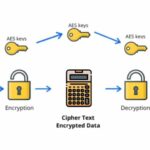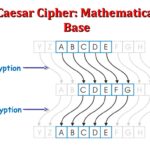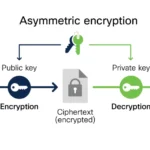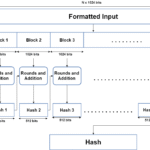Is it possible to weave a tapestry of affection that defies the mundane constraints of language? The art of encoding a sweet message, particularly one that bears the weight of three simple yet profound words—“I love you”—serves not only as an exercise in cryptography but also as a quaint and romantic gesture. In a world bustling with instant communication, why not take a labyrinthine approach to express heartfelt sentiments? Let’s delve into various methodologies of encrypting this cherished phrase, transforming it into a delightful riddle or cipher that only you and your intended recipient can decipher.
To embark on this cryptographic journey, one must first contemplate the significance of the language chosen for encryption. The simple act of conveying “I love you” engages deeply with the emotions and intentions tucked beneath its surface. But how does one transpose these feelings into an obscure format? The answer lies in a plethora of techniques, ranging from the fundamentally simple to the exceptionally complex.
One of the most accessible methods involves a substitution cipher. This technique allows for the elegant transformation of standard letters into alternative characters or symbols. For instance, we could assign each letter in the phrase a unique symbol.
Let’s illustrate this with an example:
- I = @
- L = 5
- O = 0
- V = /
- E = 3
Using this system, the phrase “I love you” becomes “@ 5 0 / 3 y0u.” This basic substitution adds an element of mystery while ensuring that the original words are still relatively identifiable with a bit of creative thinking. However, the challenge readily presents itself: how can you ensure the recipient unfailingly decodes the message without a key? This necessitates an additional layer of encryption.
Another approach worthy of exploration is the transposition cipher, where the letters are rearranged according to a predetermined system. By shifting the letters to different positions based upon a specific pattern or key, the original message can be obscured significantly. For example, you can write “I love you” vertically, then rearrange it in an orderly pattern known only to the recipient:
I l o v e y o u
By selecting a numerical system to dictate how to rearrange letters—such as moving every odd letter one space down—you can create an enigmatic yet alluring composition that piques curiosity. The recipient will find joy in piecing together the scattered letters, fostering a shared experience in coding and decoding.
Further complicating the encryptive landscape, one might consider employing simple digital encryption tools available online. These tools often use algorithms to encode messages, ensuring both security and complexity. However, using such tools can deter some individuals, as it strips away the personal touch that manually created encryptions harbor. Hence, the balance between precision and personal expression becomes vital.
As we consider these various methodologies, another question arises: how do we ensure our encrypted “I love you” retains its emotional resonance? The intrigue lies in how beautifully one can interlace personal memories or shared experiences into the encryption. Encoded hints could evoke tender recollections, encouraging the recipient to seek the key beneath the surface.
One innovative concept is to leverage art or poetry as a ciphering space. Craft a poem where certain letters spell out “I love you,” embedding it within a broader narrative. This multifaceted approach not only hides your message but also enriches it with layers of meaning and aesthetic beauty. The encryption also becomes a delightful scavenger hunt—one where your loved one must sift through the flurry of words to uncover the profound sentiments buried within.
Engaging in this endeavor highlights the commitment you have towards nurturing love—an intrinsic necessity in any relationship. However, as you craft these secret love messages, maintains conscious awareness of the balance between being playful and articulate. Overcomplicating the encryption without clear intent can backfire, causing frustration instead of joy.
Moreover, engaging in cryptography as a means to express love engenders a spirit of collaboration. Through this playful yet earnest exercise, both partners partake in a shared intellectual pursuit. This collaborative encryption could serve as a prelude to deeper discussions about feelings and relationships, enhancing intimacy.
Furthermore, the impact of technology today can’t be overlooked. Amidst the vibrant pixels of digital communication, encoding messages can become a revitalizing change. Embrace minimalist emojis or even GIFs that convey hidden meanings—instead of openly declaring your affection, send a well-timed, tastefully encrypted message that will evoke inquiry and delight.
Ultimately, encrypting a secret love message generates an innate sense of excitement and enigma. Whether through basic ciphers or artistic endeavors, the essence hinges on creativity and personalization. Envelop your cryptic messages with warmth and tenderness, guiding your beloved through a labyrinth without losing the heart of your simple message: “I love you.” Conclusively, in a world yearning for connection, the very act of encoding your love not only safeguards it but also amplifies its profundity, intertwining shared experiences and cherished sentiments throughout the fabric of your relationship.









Leave a Comment